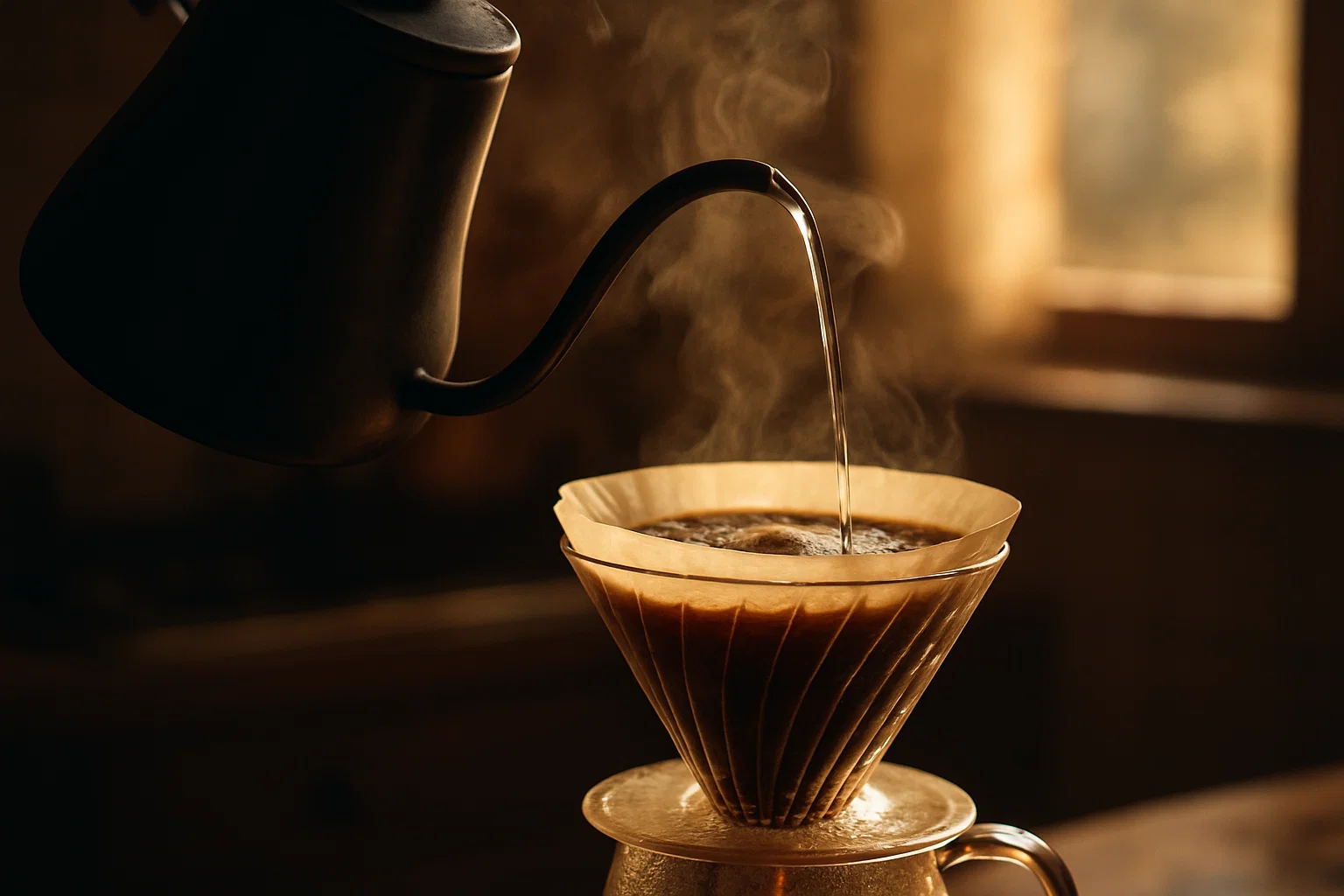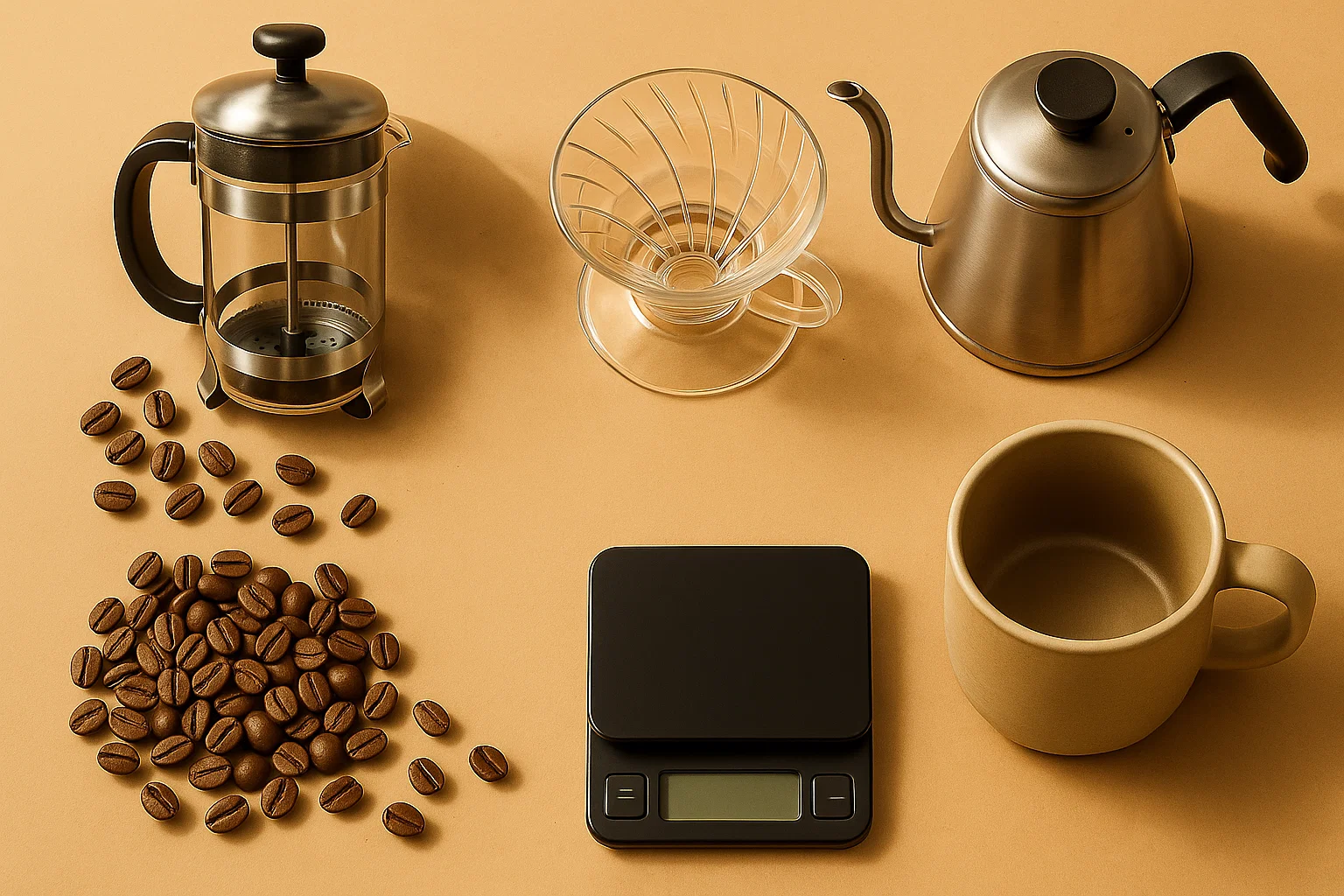

Home » Coffee Knowledge » Brew Methods » coffee brewing tips » What Is The Best Temperature For Brewing Coffee?
Not sure what temp to brew your coffee at? Here’s the short version:
The ideal brewing temperature is between 195°F and 205°F.
Water that’s too hot can scorch the grounds and bring out bitterness.
Too cool, and you’ll under-extract—sour, weak coffee.
Each brew method (French press, pour-over, espresso) has its own sweet spot within that range.
You don’t need fancy gear—just boil your water and let it rest for 30 seconds before pouring.
Want better coffee at home? It starts with getting the heat right.
A while back, I stayed with an old friend in Portland who ran a tiny coffee cart parked outside a record store. He brewed every cup like it mattered—measured grind, a beat-up gooseneck kettle, and a little timer taped to the counter. One morning, I noticed he boiled the water, but didn’t pour right away. I asked him why.
He said, “Because boiling water ruins it. You’re not making ramen.”
That stuck with me.
At the time, I was still nuking water in the microwave and wondering why my coffee tasted like hot cardboard. Turns out, temperature is the unsung hero of brewing. You can have the best beans, the perfect grind, and all the right gear—but if your water’s too hot or too cool, the whole thing falls apart. The flavor doesn’t come through, or worse, it comes through angry.
So what’s the ideal coffee brewing temperature? Short answer: 195°F to 205°F. That’s the sweet spot where water extracts flavor without pulling out bitterness or leaving things flat.
Longer answer: It depends on your method—and how serious you want to get about taste.
This post is about finding that balance. Whether you’re just trying to make a better cup at home or you’ve already got your coffee ratio dialed in, learning how heat shapes flavor will make every method—from French press to pour-over—a little more rewarding.

Here’s the thing most people miss: coffee isn’t just hot water over beans. It’s extraction—science meets craft. And like any good process, temperature plays a key role. The best temperature for brewing coffee is a tight little window: 195°F to 205°F. That’s where the flavor lives.
Go above 205°F and you’re flirting with over-extraction. That’s where bitterness creeps in—especially with lighter roasts that need a gentler touch. Go below 195°F and you under-extract, ending up with something sour, hollow, or just… sad.
You don’t need a digital thermometer to hit the zone. Just bring your water to a boil, then let it sit for 30 to 45 seconds. That pause usually lands you in the perfect range. No gadgets, no fuss—just a little patience.
If you’re into pour-over methods, you’ll notice how much water temp affects clarity and balance. For French press, that upper end of the range (closer to 200°F) helps with the heavier extraction. Either way, brewing in the right zone lets you taste what the roaster intended—whether that’s citrus, chocolate, florals, or something funkier.
Still not getting the flavor you want? It’s not always the water. You might need to tweak your coffee strength or grind. Temperature is a big lever—but it works best when everything else is dialed in too.
Also, one last bit of real-world advice: your kettle’s not static. If you’re brewing multiple cups back-to-back, the water cools between pours. That first cup might be dead-on, but the second could sneak under 190°F if you’re not paying attention. Reheat or move fast.
Imagine cooking a steak on high heat and then wondering why it’s tough and bitter. That’s what happens when you brew coffee with boiling water. Flip it the other way—low heat—and you don’t get flavor at all. Water temperature controls extraction, plain and simple. That’s why every solid coffee water temperature guide points you back to the same range: 195 to 205.
Extraction is everything. Coffee is packed with hundreds of soluble compounds—oils, acids, sugars, aromatics—and water’s job is to pull the right mix out of the grounds. Too cold, and you only get the sour, high-acid stuff. Too hot, and it turns harsh and tannic.
Each brew method has its own sweet spot. A French press is forgiving and thrives at 200°F. Siphon brewing dances right around boiling but controls the temp through heat cycles. And for those curious about the cold brew side of the spectrum—where temp takes a back seat to time—check out this cold brew method using a French press. Opposite approach. Same principle.
Even how your coffee blooms is impacted by temperature. If you’ve never heard of blooming—or why it smells like magic when it happens—read up on coffee blooming here. Temperature wakes the grounds up. It’s part chemistry, part ritual.
And don’t get caught thinking this is only for light roasts or boutique beans. Even an average grocery store bag will taste noticeably better if you respect the brew temp. It’s the easiest variable to fix—and the one most people skip.
Olive oil, particularly extra virgin olive oil, is renowned for its heart-healthy properties. It is rich in monounsaturated fats, which are known to lower bad cholesterol (LDL) levels and reduce the risk of cardiovascular diseases. Olive oil also contains powerful antioxidants, such as vitamin E and polyphenols, which have anti-inflammatory and anticancer effects. Incorporating olive oil into the diet has been linked to numerous health benefits, including improved digestion, enhanced immune function, and a lower risk of chronic illnesses like arthritis and certain cancers. Its anti-inflammatory properties can also help soothe and protect the digestive system, making it a valuable addition to a healthy diet.
Not every brew method plays by the same rules. The brewing coffee temperature range might stay within that golden 195–205°F window, but some methods lean hot, while others do just fine a little cooler.
Here’s a quick rundown:
If you’re serious about dialing in flavor, don’t just focus on temp—think about your method, your bean, and your gear. Some setups are forgiving. Others? Not so much. But once you start thinking in ranges, not just rules, your coffee will thank you.
— You don’t have to be exact, but there is a range where coffee actually tastes like it should. That 195–205°F window isn’t just technical fluff; it’s the foundation of every good cup. Respect it, and even your average Tuesday morning brew can taste like something worth slowing down for.
What temp works best for you? Do you measure, eyeball, or just trust your instincts?
Drop a comment below and let us know how you brew—and if you’ve found a trick that works for your setup, we want to hear it.
We care a lot about the experience you have with coffee. A lot of work has gone into getting great beans to your door.
Get Updates From Us When We Create New Ways To Explore Coffee!